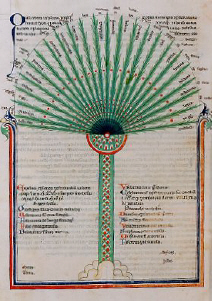PHYSICAL CATEGORIES ARE MATTER, FORM, COMBINATION, ATTRIBUTES AND ACCIDENTS.
3. What classification shall we adopt? There is first matter, then form, and further the combination which results from their blending. Then we have a number of conceptions which refer to the three preceding classes, and are predicated of them; the first, simply, as attributes; the others, besides, as accidents. Among the latter, some are contained within the things, while others contain them; some of them are actions, and the others experiences (passions) or their consequences.
THE THREE FIRST PHYSICAL CATEGORIES OF “MATTER, FORM AND COMBINATION.
Matter is something common which is found in all things; nevertheless it does not form a genus because it does not admit of any differences, unless its differences consist in appearing in different forms; as, here, fire, and there, air. Philosophers who consider that matter is a genus base this opinion on the fact that matter is common to all the things in which it exists, or that it stands in the relation of the whole to the parts of particular objects (or, “matters”). In this case, however, the term “genus” would be used in a sense differing from the one it bears usually. It would then be no more than an only or single element, if we admit that an element can be a genus. If, conceiving that matter is united to matter, or exists within it, we add form to matter, matter would thereby be differentiated from the other forms, but it will not comprehend every being-like form. Were we to call the generating principle of being “form,” and were we to call the reason which constitutes the form “being-like reason,” we shall not yet have clearly defined the nature of “being.” Finally, if we give the name of “being” only to the combination of matter and form, the result will be that neither of these two (matter or form taken separately) will themselves be “being.” If, however, we were to assert that not only their combination, but also each of them separately were “being,” we then would be faced with the problem of what is common to all three.
DIFFERENT PHYSICAL CATEGORIES.
As to the things which are simply posited as attributes, they should, as principles or elements, be classi fied under relation. Among the accidents of things, some, like quantity and quality, are contained within them; while others contain them, as time and place. Then there are actions and experiences, as movements; then their consequences, as “being in time,” and “being in place”; the latter is the consequence of the combination, the former is the consequence of movement.
FIVE PHYSICAL CATEGORIES.
We decide, therefore, that the three first things (matter, form, and their combination) contribute to the formation of a single genus, which, by a figure of speech, we call (“corporeal) Being,” a genus which is common to them, and whose name applies to all three. Then come the other genera; such as relation, quantity and quality; the (relation of) being “contained in place,” and “in time”; movement; and place and time. But as the category of “time” and “place” would render superfluous that of “being in place” and of “being in time,” we should limit ourselves to the recognition of five genera, of which the first (“being”) comprises matter, form and the combination. If, however, we should not count matter, form and combination as a single genus, our analysis will assume the following shape: matter, form, combination, relation, quantity, quality, and movement. Otherwise, the latter three might be subsumed under relation, which possesses more extension than they.
